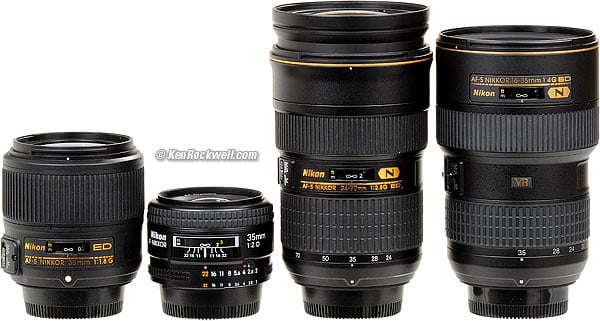

Sharpness is one of the aspects potential users of the Z 35mm will be most interested in since Nikon has placed such a heavy focus on the superior optical quality of its new lenses. The three DSLR lenses also feature a focus distance scale which is found inside a small window on the barrel.īoxed along with each lens is a petal-shaped lens hood to help protect the front element and a clip-on lens cap.Įach lens also features its own lens coating to reduce flare and ghosting.
NIKON 35MM 1.8 MANUAL
On the side of the barrel of each lens, you’ll find an AF/MF switch that lets you jump between autofocus and manual focus more quickly than if you entered the menu. Their focus rings all feature a ridged design that makes them easier to grab and turn but the grooves on the Z lens are shallower. The Sigma has a nice all-metal barrel, the Z lens is a mix of metal and polycarbonate, and the two Nikkor DSLR lenses are predominantly made of plastic. The latter glides on smoothly whereas with the other two, there is a degree of stiffness.Īll four lenses feature a high-quality construction. Something I noticed about the two Nikkor lenses is that they are more difficult to attach to the adapter than the Sigma lens. They are twice as heavy as the 35mm 1.8 G and clearly outweigh the Z 35mm as well.īy attaching the FTZ adapter to the three DSLR lenses, they all increase in length and weight compared to the Z lens, which is something to consider if you’re looking for the most compact set-up possible. The two lenses that are most similar in size and weight are the 1.4 primes from Nikon (600g) and Sigma (670g).
NIKON 35MM 1.8 FULL
To know more about our ethics, you can visit our full disclosure page. If you buy something after clicking the link, we will receive a small commission. Within the article, there are affiliate links. We were not asked to write anything about these products, nor were we provided with any sort of compensation. *Note: On the Z7, the EXIF data of certain lens models isn’t precise (for example, both the Sigma and Nikkor 1.4 were registered as 35mm 1.4G).Įthics statement: We borrowed these four lenses to conduct our comparison on the Nikon Z7. We hope you enjoy browsing through our findings! Our aim was to see just how far Nikon has pushed the boundaries of optical quality and more importantly, how much of an impact these improvements will have on real-world photography. Because we had a full month with the lens, we decided to dedicate much of our time to testing it against three of its main competitors for the Nikon F mount, all of which can be used with full automation* on Z cameras via the FTZ adapter. One of three lenses launched alongside the new Z cameras was the Z 35mm f/1.8S. This combination, according to Nikon, should allow for a new dimension in optical performance for current and future optics. When the Nikon Z system was announced in 2018, much fanfare was made over the new mount which, in addition to being 55mm in diameter, also has a short flange depth of 16mm.


 0 kommentar(er)
0 kommentar(er)
